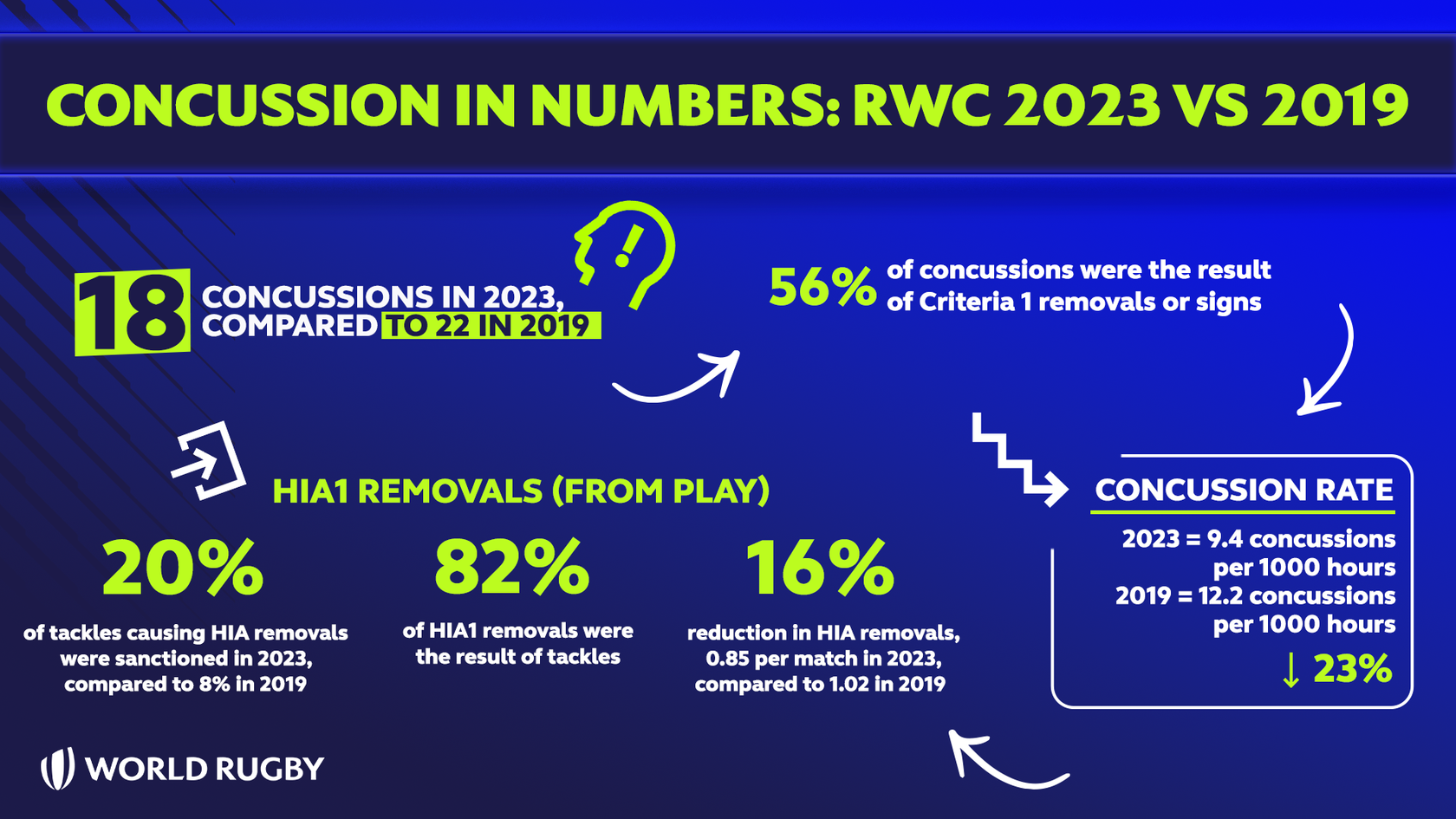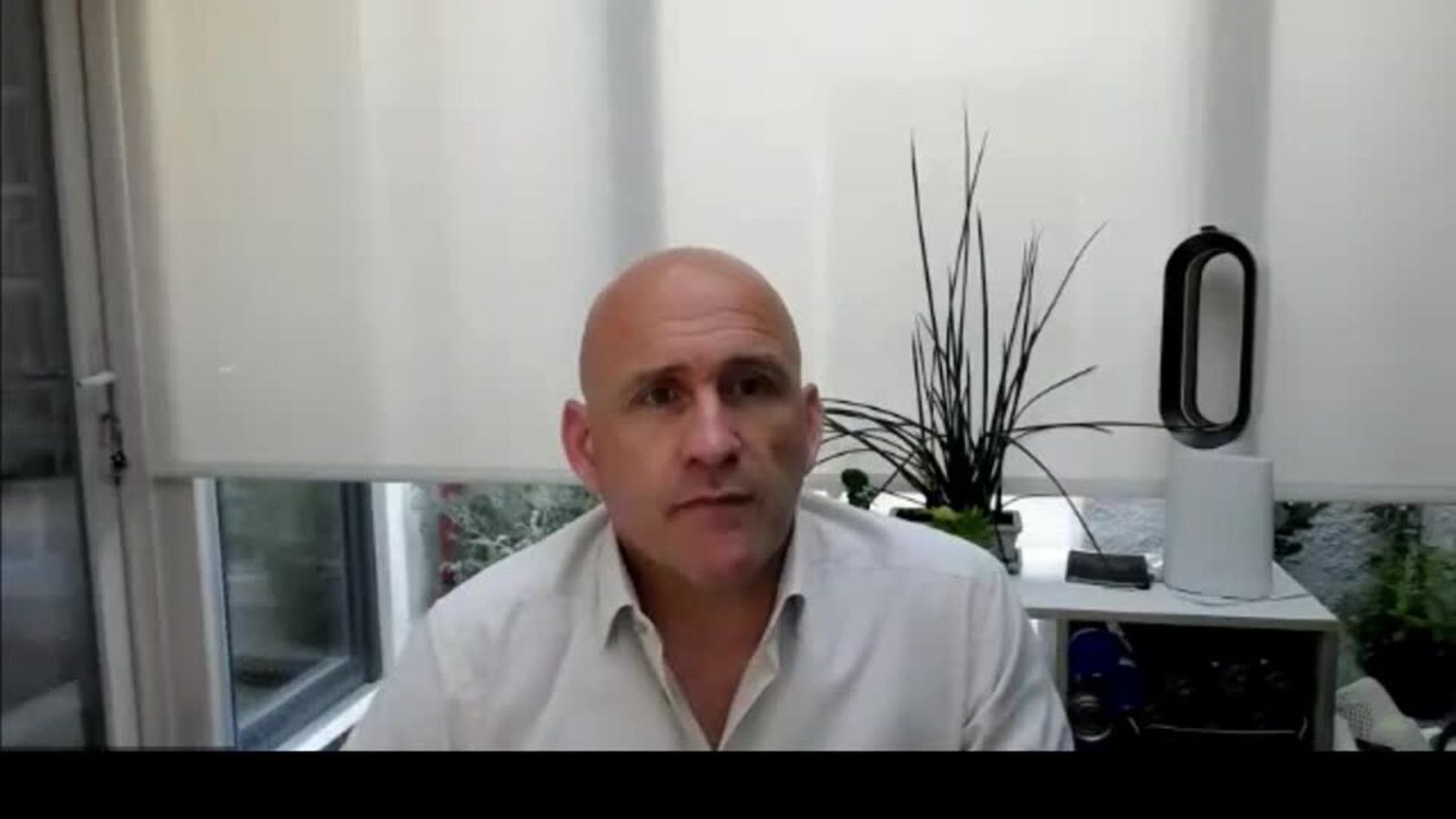Players Matters - Jan 2025

January 2025
As the dust settles on 2024, it’s worth looking back on the year in Player Welfare, where a number of initiatives have been implemented, a number of opportunities identified, and truthfully, many challenges encountered.
Last year, at least from our Player Welfare perspective, will be remembered as the first time, in any sport, in which instrumented mouthguard technology was introduced to support welfare and performance. That happened when we mandated IMG use for players to have access to the HIA Off Field Screen, with alerts incorporated into the screening process as a way to identify and then screen players who had experienced significant head acceleration events. The Men’s Six Nations was the first tournament in which this happened (though in 2023, it had been trialed in the WXV competitions), with other tournaments following suit, most recently the SVNS Series.
The process has been both fascinating and challenging. It was never going to be simple, nor did we expect it to be smooth, but we firmly believe that the rewards from the technology make occasionally choppy waters worth fighting through, and the IMGs are here to stay.
We are continually reminded of their value when we read studies associating estimated head impacts with an increased likelihood of developing neurodegenerative diseases later in life. A limitation of these studies is that they’ve never directly measured the number and magnitude of head impacts, and as a result, they estimate them based on length of a player’s career, playing position, or extrapolations from other similar cohorts. We are now, for the first time, putting ourselves in a position to quantify head impact exposure, and while the ‘reward’ for this will take time to receive, there will come a time within the next decade where we are able to more precisely explore these associations.
We’re also accumulating data at a rate never seen before in this field. To date, we have achieved approximately 90% compliance, and have gathered about 250,000 data points, among them 150 concussions. Every contact now “counts” towards our understanding of head impact, and so we can explore differences between the sexes, between playing positions, within players from one match to the next, and how head accelerations are affected by player behaviours, law change, and technical execution.
Another area where the IMGs will add value is in our understanding of how training compares to matches as a source of head impact load. A paper published recently by collaborators across the UK showed that in elite men, a typical match is the equivalent of about five weeks of typical training in terms of the total number of head accelerations it caused. In women, that ratio is about 1:8, which is to say, for every head acceleration in a typical training week, there are eight in a typical match. Once you look at the higher magnitude head accelerations, the ratio increases even more – matches expose players to more significant head accelerations than training. This can be seen in the figure below, where men are shown on the left, and women on the right. Clearly, the match head impacts significantly outnumber training impacts, and the higher the magnitude (right and top of each graph), the more likely it is that the head accelerations happen in matches, not training.

What this means is that matches must remain a strong focus of interventions to reduce head impact load for players, since they account for the bulk (80%) of head impacts experienced by players. That’s not to say that training makes a trivial contribution to head load, and it should definitely not be neglected – 20% of impacts happen in training environments that are theoretically controllable. Our challenge is to balance the approaches to match and training load reduction.
This is further complicated because we don’t know what the minimum ‘dose’ of training should be to minimize the match-risk – if training is thought of as preparation for matches, then it has a preventative role, and too little training may increase match risk as much as too much training increases risk directly. Finding this balance will be crucial as we move forward.
This is likely to be one of the key topics of conversations in 2025, which kicks off with our Shape of the Game meeting, a multi-stakeholder gathering that brings on-field, off-field and medical minds together to consider these issues, as well as others that have player welfare implications.
The persistent challenge is to deliver player welfare initiatives without unduly compromising the integrity of the game. The DNA of the sport, and the performance objectives of its players, coaches and managers, cannot be ignored, and we’re very mindful of the importance of working with the performance stakeholders to get the best possible buy-in for welfare. Ultimately, the sport is healthy when it is both popular and safe, and those two imperatives can either be seen in opposition with one another (as they are by some), or, as we would prefer to, recognize the potential for tensions between them so that we can navigate and overcome the barriers, by collaborating to develop pragmatic and effective solutions for welfare.
2024: A Milestone Year for Brain Health Services
We're proud to reflect on the incredible strides made in advancing player support through the Brain Health Services in 2024. The year marked the launch of the platform in Ireland, Australia, and most recently, Wales—each a significant milestone for the rugby community.
The Brain Health Service is the first of its kind in sports, offering retired players a comprehensive online platform to assess and manage their brain health. The service focuses on identifying modifiable risk factors for dementia, providing personalised insights and guidance to optimize cognitive, psychological, and medical well-being.
Since its launch in Ireland in June 2024, the platform has welcomed over 100 retired players who are now proactively taking steps to support their brain health and overall well-being. This milestone reflects World Rugby’s growing awareness and commitment to supporting players beyond their time on the field.
Looking ahead to 2025, we're excited to expand further with planned launches in South Africa, Scotland, and New Zealand in the early part of year. These rollouts will ensure that even more retired players globally have access to this innovative service.
Looking ahead
2025 will also give us a Rugby World Cup, with New Zealand aiming to defend the title they won on home soil in 2022. The growth of the women’s game is one of the most exciting developments in the sport, and it has driven an explosion on research and welfare support for women’s players. 2025 will be an opportunity to showcase this research and its applications, including educational modules to support pelvic health, pregnancy and return to play, and concussion reduction.
Rugby Union being Rugby Union, we have no doubt 2025 will throw up many other challenges and opportunities, and we look forward to engaging with all our stakeholders as we attempt to overcome them. Thank you for your contributions to the discussion in 2024, and for your ongoing interest in the welfare of the players.
Thank you for reading.
Prof Éanna Falvey








